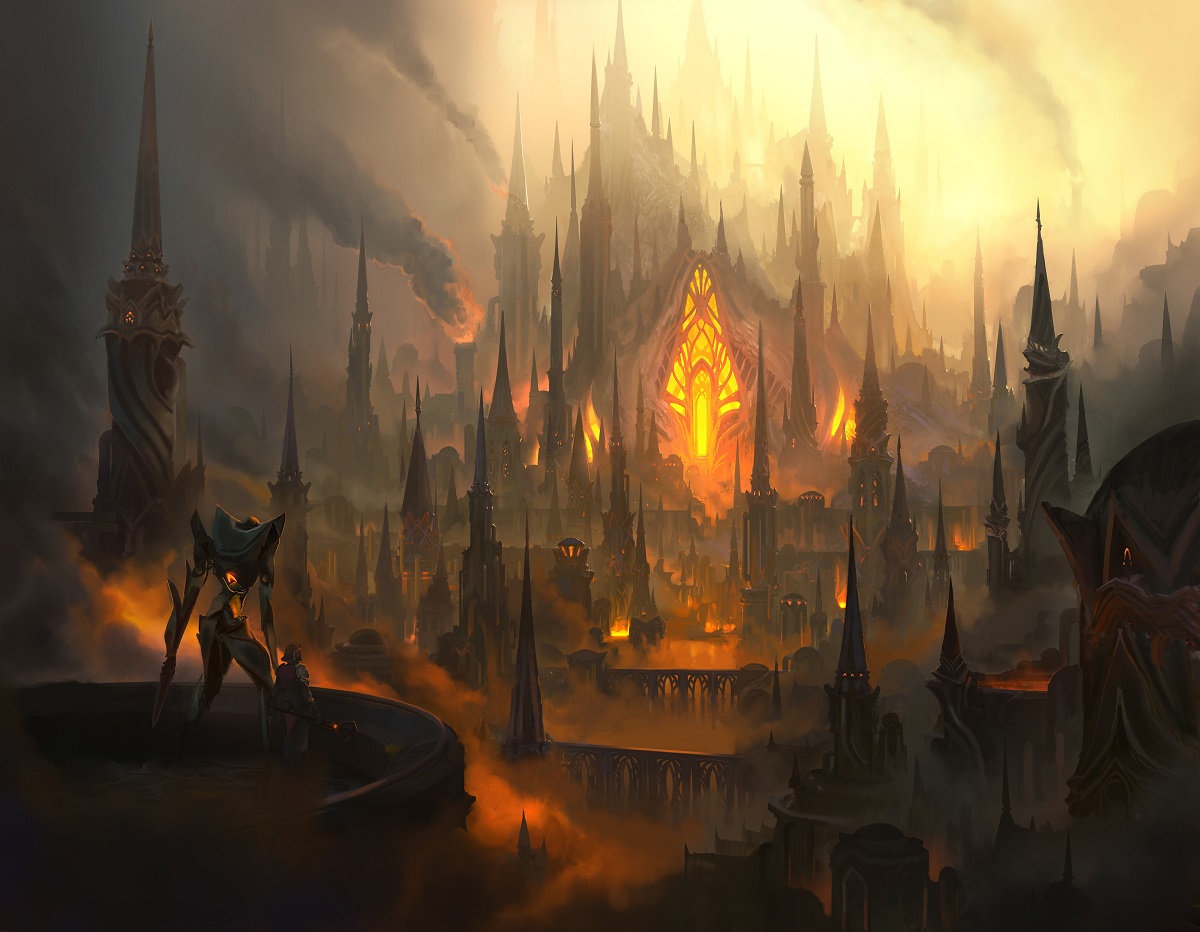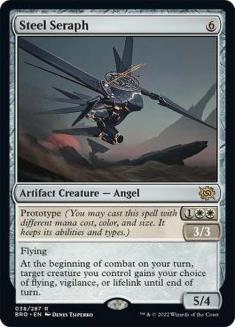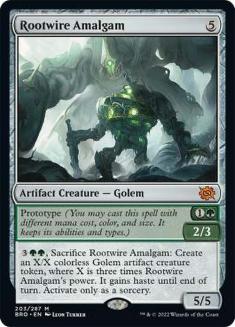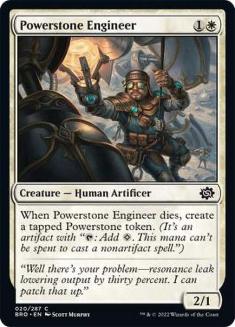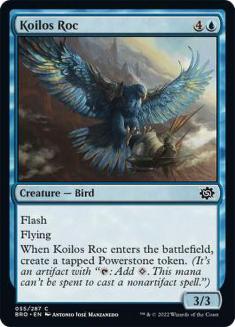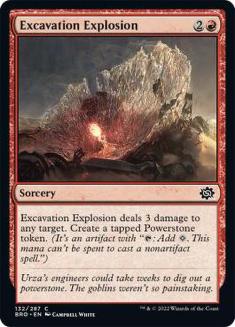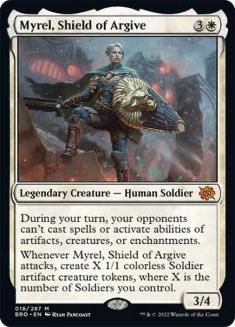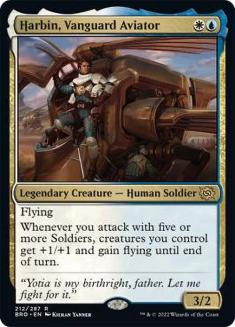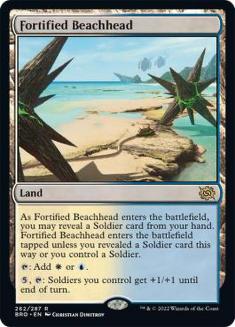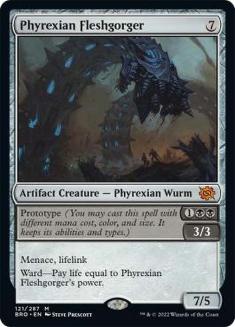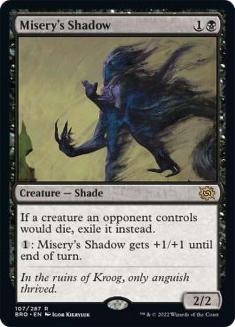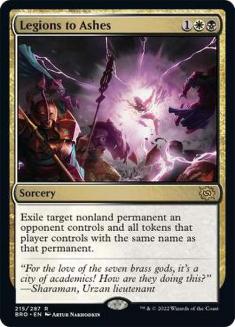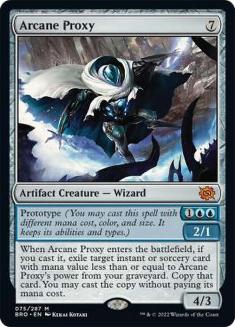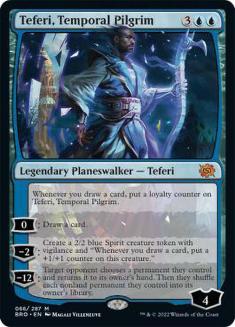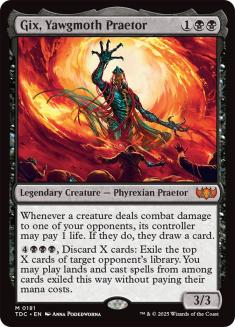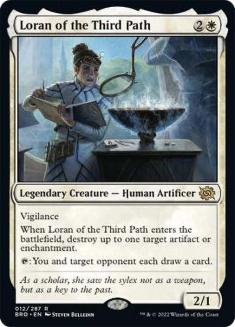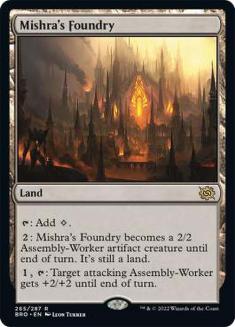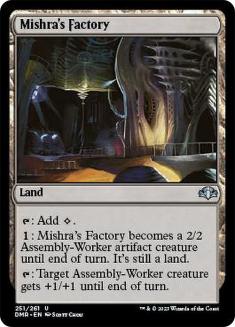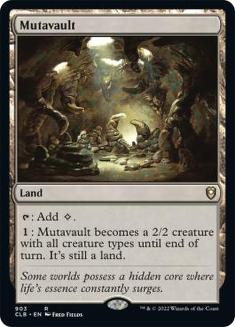It hasn’t been all that long, gamers, but it’s time for another of my Cube Top 10 lists! The release of The Brothers’ War is just around the corner, and I’m feeling all the usual excitement of the Cube update season that follows the printing of new Magic sets. Before I get to my list, let’s take a look at some of the broad offerings of The Brothers’ War.
Artifacts Matter
It wouldn’t be an Urza set if we didn’t see a lot of artifacts and cards that care about artifacts. This is an area where we’ve seen a lot of broken cards in Magic’s history, though The Brothers’ War played this theme fairly tamely. Rather than pushing broken artifacts, the story of their importance was more aesthetically driven by volume of artifacts and colored artifacts. The prototype mechanic showcases the prevalence of artifacts in a very cool new way.
Powerstones
Another way that artifacts take center stage is through the generation of Powerstones. There are quite a lot of way to incidentally generate Powerstone tokens throughout the set.
There aren’t any Powerstone generators that really scream general Cube-worthiness, but the concept is very intriguing. I’m seen The Brothers’ War compared to Rise of the Eldrazi in some respects with huge mana costs for activated abilities, and it seems to me that mixing some Powerstones with the level up mechanic could make for a pretty wild Cube environment. The power level of that sort of environment is much lower than what I typically enjoy designing, but if somebody else built such a Cube, I’d be thrilled to draft it.
Meld
The return of the meld mechanic is ultimately fairly minor, but it leaves some food for thought for Cube. I wrote about the mechanic at length last week, and I’m looking forward to tinkering with the new meld cards.
Soldiers
Lastly, the soldier tribe is getting a few nice bumps. I’ve grown cold on most non-Warrior, non-Human creature types as themes in Cube, but mechanics that care about creature types are generally crowd pleasers and adding more stuff to this space invariably makes some people happy. There haven’t been a ton of blue soldiers in the history of Magic, so we probably need to see more of an Azorius focus for Soldiers in the future to really make this matter, but it’s worth paying attention to this space for Soldier fans.
General notes on the set out of the way, let’s take a look at my picks for the ten most broadly Cube-worthy cards from The Brothers’ War!
10. Phyrexian Fleshgorger
Vampire Nighthawk can still hang in a lot of Cube environments, but the card certainly ain’t what it used to be. I liked some of what Nighthawk Scavenger was doing as an upgrade in this space, but that card is guilty of a sin that I find particularly grating: it’s a proactive card that cares what your opponent is doing. Phyrexian Fleshgorger is just a nicely statted creature on offense or defense that has the potential to be a huge draw in the late-game.
I can see this card being a player all the way up to Vintage Cubes, assuming the presence of aggressive archetypes in those Cubes, and this is just a solid card in any environment that cares about creatures attacking and blocking. I don’t think that Phyrexian Fleshgorger is going to cause any serious reconsideration of what to do with black as a color, but any Cube that was looking at cards like Vampire Nighthawk and Nighthawk Scavenger should be giving a warm welcome to this one.
9. Misery’s Shadow
This is a nice and easy to cast beatdown creature, but I actually dislike this card a fair amount. The more the static ability matters, the less I want Misery’s Shadow anywhere near my Cubes. I’m a huge detractor of hosers in Cube. I just want players to be able to do their thing! The thing that I invited them to do!
That said, I’m really into this card if the static ability is irrelevant and it’s just an upgraded Nantuko Shade, and I know that others really like griefing their opponents, so it will absolutely find homes in Cubes where it is a relevant hate card. I imagine that Ryan Saxe was slamming the pre-order button on this one for his Classic Cube.
8. Legions to Ashes
What is Orzhov if not the two colors with the best removal spells meeting to play even more removal spells? I’m more of a Vindicate man myself, but a Maelstrom Pulse effect that exiles is pretty significant for a lot of Cubes, especially if you’re not as big on Stone Rains as I am.
In general, I don’t love using gold slots on removal spells, so this card isn’t super-high on my list, but it is a big deal for environments with a lot of planeswalkers to answers, especially if these environments also support token themes. This is definitely one of those cards that can be cleanly added to the Magic Online (MTGO) Vintage Cube without anybody batting an eye.
7. Arcane Proxy
Arcane Proxy is no Snapcaster Mage, but what is? Not having flash means you won’t be able to use this one to cast counterspells, but in Cubes where cantrips, removal, and busted stuff like Time Warp (or Time Walk!) are available you can get a lot of mileage out of a card like this.
I kind of expect Arcane Proxy to show up in more Cubes initially than in Cubes where it will ultimately have a meaningful home, but it’s a cool one that I’m happy to try. Specifically, I think that the card is fairly weak in Vintage Cube and other very high power environments, given that it forces you to be proactive in ways that other similar cards don’t. In Cubes where there’s less pressure to do completely broken things or interact with your opponent’s broken things, I’m much bigger on the card.
6. Teferi, Temporal Pilgrim
Teferi, Temporal Pilgrim is another blue card that is strictly proactive, but the generic card advantage offered here is easier to take advantage of. At five mana, this one isn’t exciting for the most powerful Cubes, but at larger Cube sizes it can still make the cut, and you can really quickly get up to twelve loyalty when you play Teferi alongside powerful draw spells.
This is no Teferi, Hero of Dominaria, but I think that makes it a better fit for non-Vintage Cubes. It does something powerful that requires an answer and snowballs, but five mana is a lot and the rate is very fair. The -2 ability technically means that this Teferi can protect itself, but given the high mana cast, that will often mean you’re chump-blocking if you have to make that play. This card looks well-balanced to me and the static ability should lead to some great stories in the Cubes that choose to give this one a try.
5. Gix, Yawgmoth Praetor
Unlike Teferi, Gix, Yawgmoth Praetor comes at a quite efficient rate. Appropriate for a Phyrexian, if you ask me. Gix is a very pushed Phyrexian Arena-esque effect for black beatdown decks, which we’re starting to get a lot of meaningful support for in Cube. I don’t think we’re there for me to be very excited about this card for Vintage Cube, but as a rule I see Gix as being a huge player in aggressive black Cube archetypes.
The stream of extra cards will definitely help you stay ahead if you land Gix when you already have good attacks, but more importantly a three-mana 3/3 is just a solid body. I’m not saying that you’re guaranteed to have a good attack with Gix and obviously this is a body that dies to Lightning Bolt, but it is a stat line that at least demands some respect.
The seven-mana ability is kind of flavor text, but I’m sure it comes up sometimes in really grindy environments, and likely steals some games when you see it resolved. It’s mostly an ability for Commander games, which naturally means Gix will be awesome in Commander Cubes.
4. Loran of the Third Path
It’s really about time that we got a white Reclamation Sage! I’m not sure how often you’ll want to use Loran’s activated ability, but having it there is upside, and it will often be the case that aggressive white decks can cast more of their spells sooner than their opponent.
Loran is a Human, which is nice, but mostly this is a solid disruptive creature for environments with a lot of artifacts and/or enchantments. This card is right at home in Vintage Cube, and I’m already having nightmares of losing to Karakas loops.
3. Lay Down Arms
We’re seeing a lot of experimentation with cheap white removal these days, and this is another excellent design on that front. Both Swords to Plowshares and Path to Exile are very strong, but the drawback on Path to Exile can really cost you in some games. Lay Down Arms is another option that is great against Birds of Paradise, which is very welcome in white. It won’t answer an early (or even an on-time) Griselbrand, but beggars can’t be choosers.
Lay Down Arms is an uncommon, though it’s worth noting that the dual land manabase of higher rarities is what really powers this card as an answer to meaningful threats as the game progresses. This card is likely significantly better outside the context of Peasant Cube, but it’s a consideration for Peasant environments with low mana curves and/or other incentives to draft mono-white.
The more that a Cube is about curving out with creatures, the more I’m about Lay Down Arms.
2. Third Path Iconoclast
Young Pyromancer never looked so good! Sure, the blue pip makes the card technically harder to cast, but the best Young Pyromancer decks were blue anyway! Triggering off any noncreature spell is a much bigger deal here. Whether we’re talking about Vintage Cube, Peasant Cube, or any number of flavorful environments, this card is going to have a lot of homes.
The tokens are artifacts, which can absolutely matter, especially when we’re talking about making tokens off casting artifacts being a big deal! Dipping into blue for a sacrifice deck doesn’t always make the most sense, but it’s always good to have more options. Only the most specific and degenerate Izzet decks would avoid a card like this, and it might still be playable even in some of those.
It’s also worth noting that this kind of effect just scales incredibly well. If you’re in the market to control one Young Pyromancer, surely you wouldn’t be upset to control two! 10/10. Slam dunk.
1. Mishra’s Foundry
The reception to Mishra’s Foundry that I’ve seen has mostly been people lamenting the comparison to Mishra’s Factory. That is to say that the card is worse than the best creature-land to ever do it. Your standards are unreasonable, and this card is great. We’re not exactly far removed from Faceless Haven being banned in Standard. Creature-lands are just a powerful category of card.
To expand on that, having some “spells” hanging out in the manabase is often an important ingredient in the recipe for successful aggressive decks in Cubes. The closer my manabase looks to seventeen basic lands, the less optimistic I am about my beatdown decks. Trimming lands and/or having stuff like Mutavault and Wasteland in the spread goes a long way. Mishra’s Foundry is of course weaker than the two very best options, but it’s a great fit if you find Factory and Mutavault to be a little too powerful. Alternatively, it just plays great alongside both cards!
Mishra’s Foundry will get crowded out of a lot of smaller Cubes, but it’s a better fit than a lot of cards that I tend to see in the average 540-card Cube that otherwise offers aggressive support. Mishra’s Foundry obviously isn’t a best-in-class card, but it’s a strong role-player with clear applications. I expect to Cube with it quite a lot.
While I wouldn’t say that The Brothers’ War is in any way revolutionary for Cube broadly, the set does offer a reasonably long list of both powerful and thematic cards. I would say that the set delivers more on aesthetic and nostalgia than anything, but those are two things that I care quite a lot about. The set looks very “safe” but it manages to be exciting despite this, which is really cool if you ask me. I’m looking forward to playing it.

